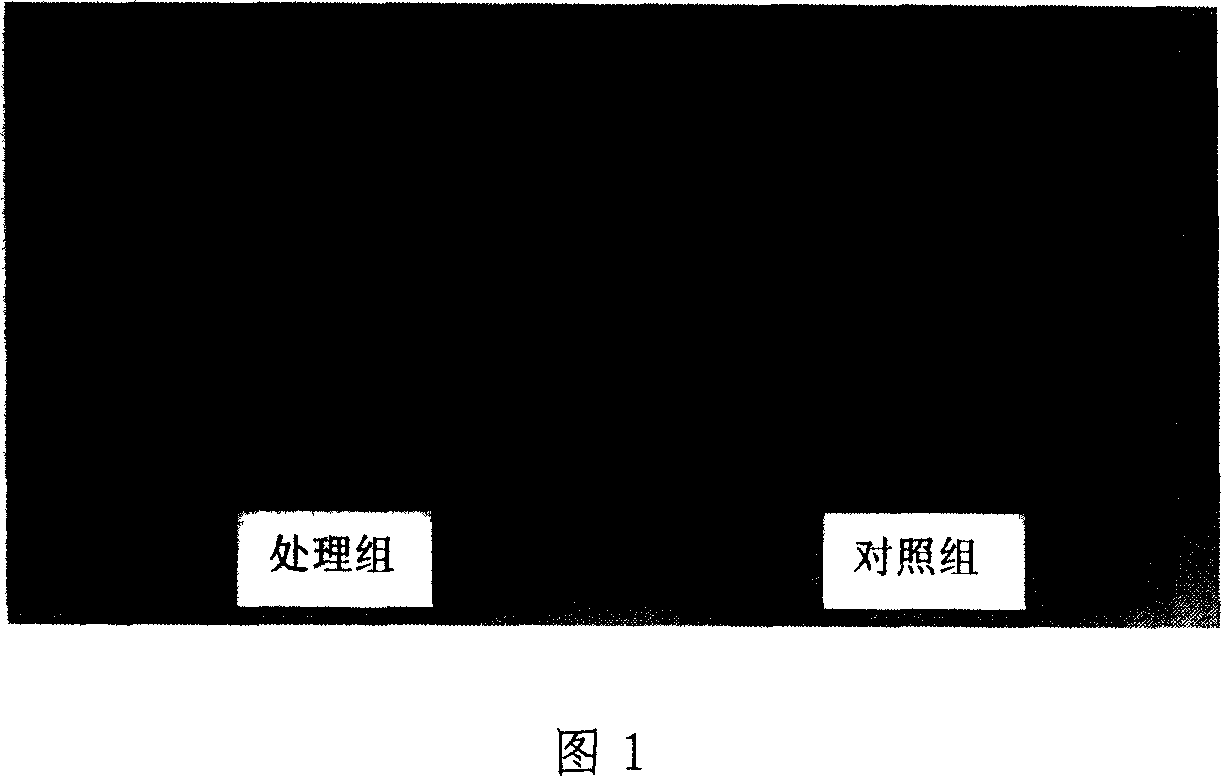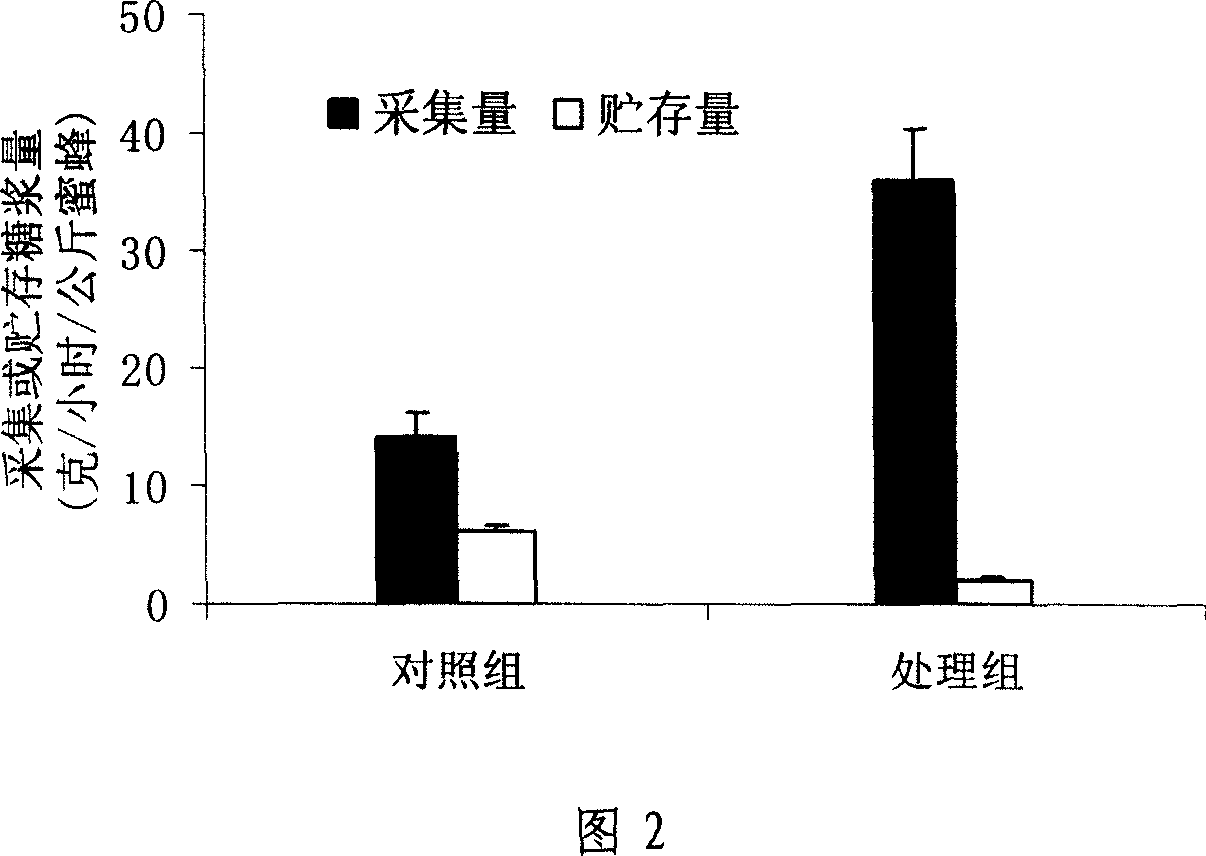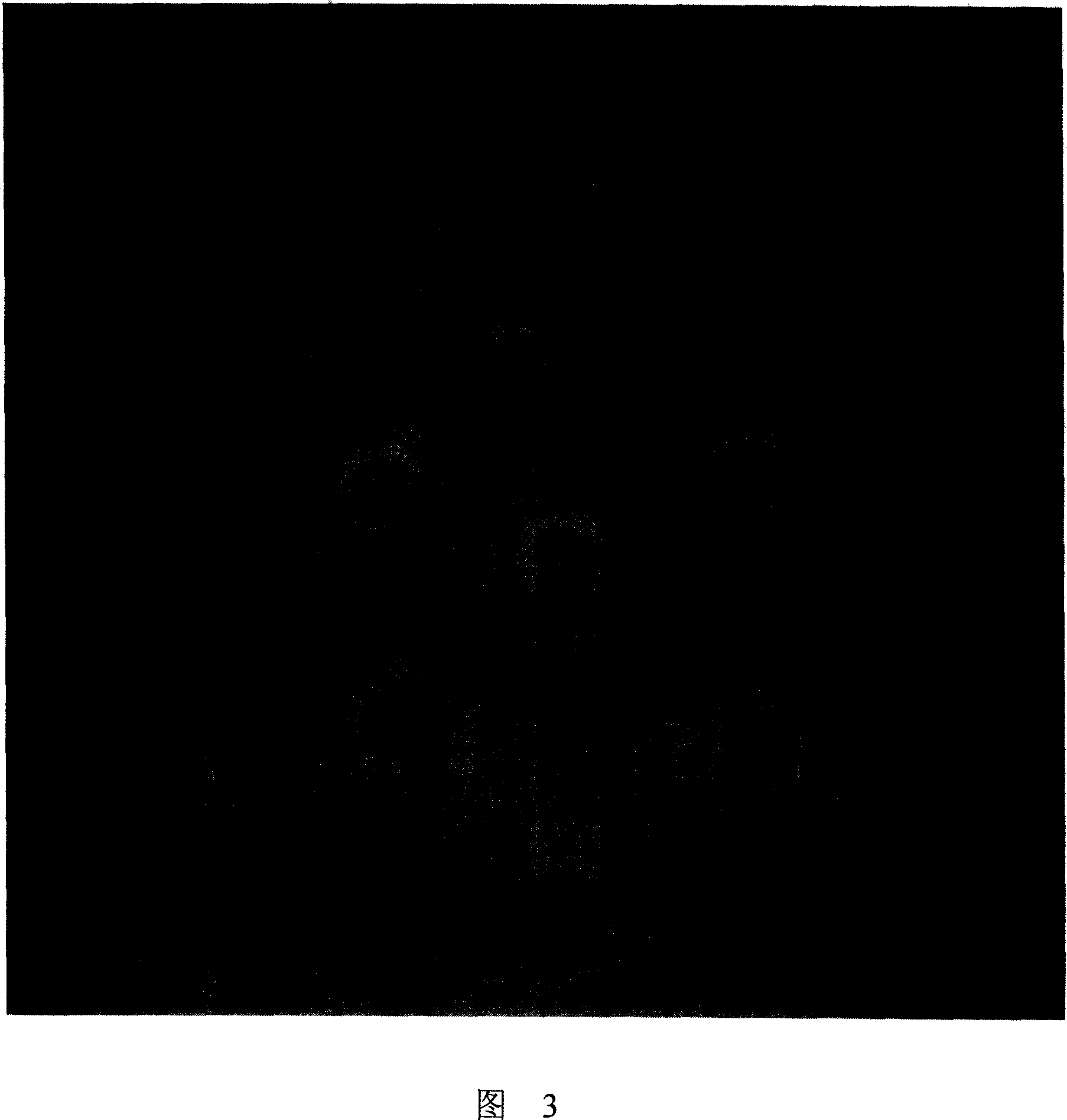Feed additive for introducing bee to pollinate and its prepn process and application
A feed additive and bee pollination technology, which is applied in the field of plant pollination, can solve problems such as low efficiency, time-consuming and laborious, and failure to meet normal production, and achieve the effects of wide application range, significant economic benefits, and good promotion and application prospects
- Summary
- Abstract
- Description
- Claims
- Application Information
AI Technical Summary
Problems solved by technology
Method used
Image
Examples
experiment example
[0031] Use Elsholtzia rugulosa (Elsholtzia rugulosa) nectar brewed by bees as a raw material, add 4 kg of 95% ethanol aqueous solution to 1 kg of honey, stir evenly, and let it stand at 18°C to 25°C After 25 hours, after layering, use a pipette to draw the upper layer of liquid, put it into a beaker, add 5 grams of aluminum trichloride aqueous solution with a concentration of 3% by weight to the upper layer of liquid drawn, and heat it at 18 ° C ~ Under the condition of 25° C., after standing still for 4 hours, filter, and the obtained powdery sediment is the feed additive of the present invention. Add sucrose to water to prepare 30% sucrose syrup by weight; then add the feed additive to the syrup and stir evenly. The amount of addition is to add 0.08 gram of additive per 100 grams of syrup to make bee feed . The bee colony that is providing pollination service is fed twice a day, the first time is at 9:00 in the morning, and the second time is at 13:00 noon; each feeding a...
Embodiment 1
[0037]Use the Elsholtzia rugulosa honey brewed by bees from the nectar of Elsholtzia rugulosa as a raw material, add 3 kg of ethanol aqueous solution with a concentration of 95% by weight to 1 kg of honey, stir evenly, and let it stand at 18°C to 25°C for 20 Hours, after layering, draw the upper liquid with a pipette, put it into a beaker, add 5 grams of aluminum trichloride aqueous solution with a concentration of 3% by weight in the drawn upper liquid, and heat it at 18°C to 25°C. Under the condition of ℃, stand still for 3 hours, filter, and the obtained powdery sediment is the feed additive. Add sucrose to water to prepare 25% sucrose syrup by weight concentration; then add the feed additive to the syrup and stir evenly, the addition amount is to add 0.07 grams of additives per 100 grams of syrup to make bee feed . When feeding bees, first place the prepared feed in a conventional feeder, and then put the feeder into the beehive. The bee colony that is providing poll...
Embodiment 2
[0039] Repeat embodiment 1, following difference is arranged: in 1 kilogram of honey, add the ethanol aqueous solution of 4 kilograms and stir evenly.
PUM
 Login to View More
Login to View More Abstract
Description
Claims
Application Information
 Login to View More
Login to View More - R&D Engineer
- R&D Manager
- IP Professional
- Industry Leading Data Capabilities
- Powerful AI technology
- Patent DNA Extraction
Browse by: Latest US Patents, China's latest patents, Technical Efficacy Thesaurus, Application Domain, Technology Topic, Popular Technical Reports.
© 2024 PatSnap. All rights reserved.Legal|Privacy policy|Modern Slavery Act Transparency Statement|Sitemap|About US| Contact US: help@patsnap.com










